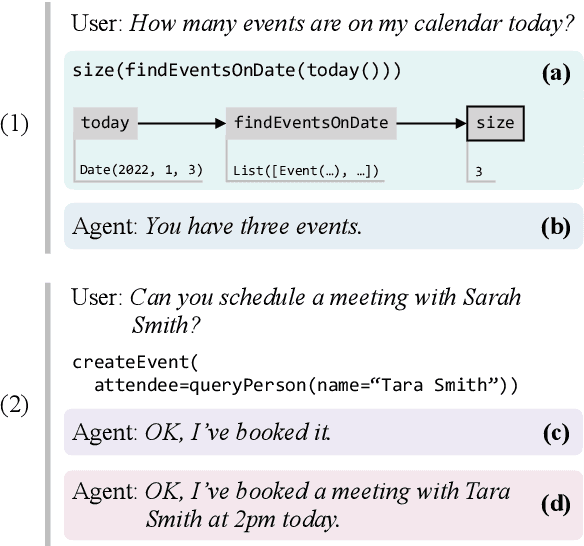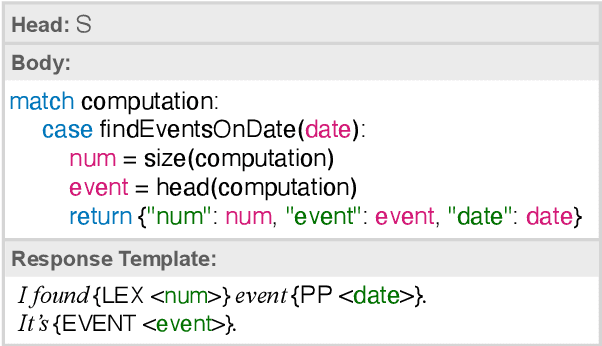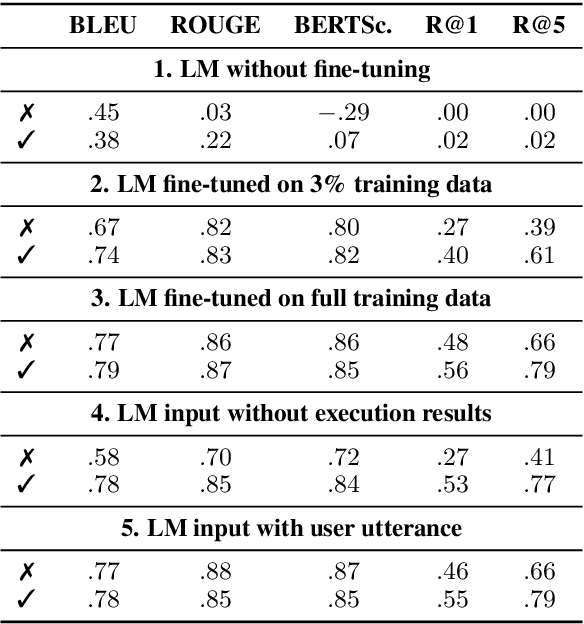The Whole Truth and Nothing But the Truth: Faithful and Controllable Dialogue Response Generation with Dataflow Transduction and Constrained Decoding
Paper and Code
Sep 16, 2022



In a real-world dialogue system, generated responses must satisfy several interlocking constraints: being informative, truthful, and easy to control. The two predominant paradigms in language generation -- neural language modeling and rule-based generation -- both struggle to satisfy these constraints. Even the best neural models are prone to hallucination and omission of information, while existing formalisms for rule-based generation make it difficult to write grammars that are both flexible and fluent. We describe a hybrid architecture for dialogue response generation that combines the strengths of both approaches. This architecture has two components. First, a rule-based content selection model defined using a new formal framework called dataflow transduction, which uses declarative rules to transduce a dialogue agent's computations (represented as dataflow graphs) into context-free grammars representing the space of contextually acceptable responses. Second, a constrained decoding procedure that uses these grammars to constrain the output of a neural language model, which selects fluent utterances. The resulting system outperforms both rule-based and learned approaches in human evaluations of fluency, relevance, and truthfulness.
 Add to Chrome
Add to Chrome Add to Firefox
Add to Firefox Add to Edge
Add to Edge